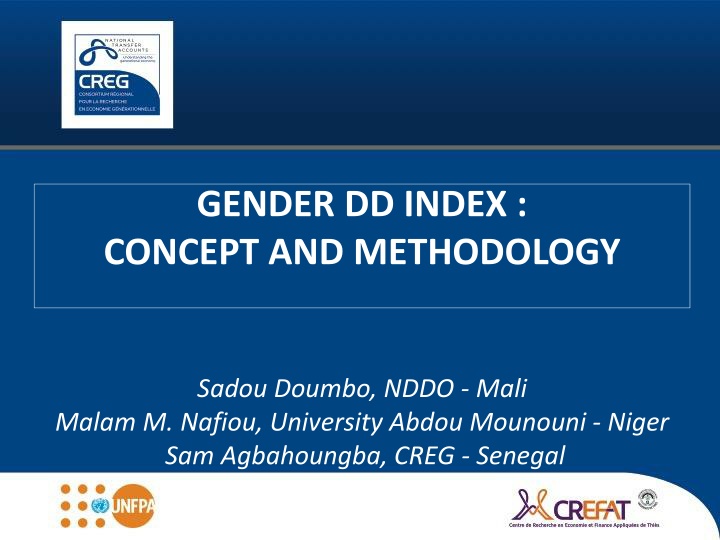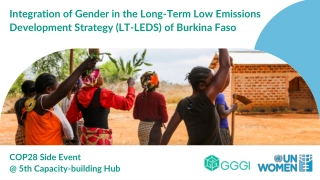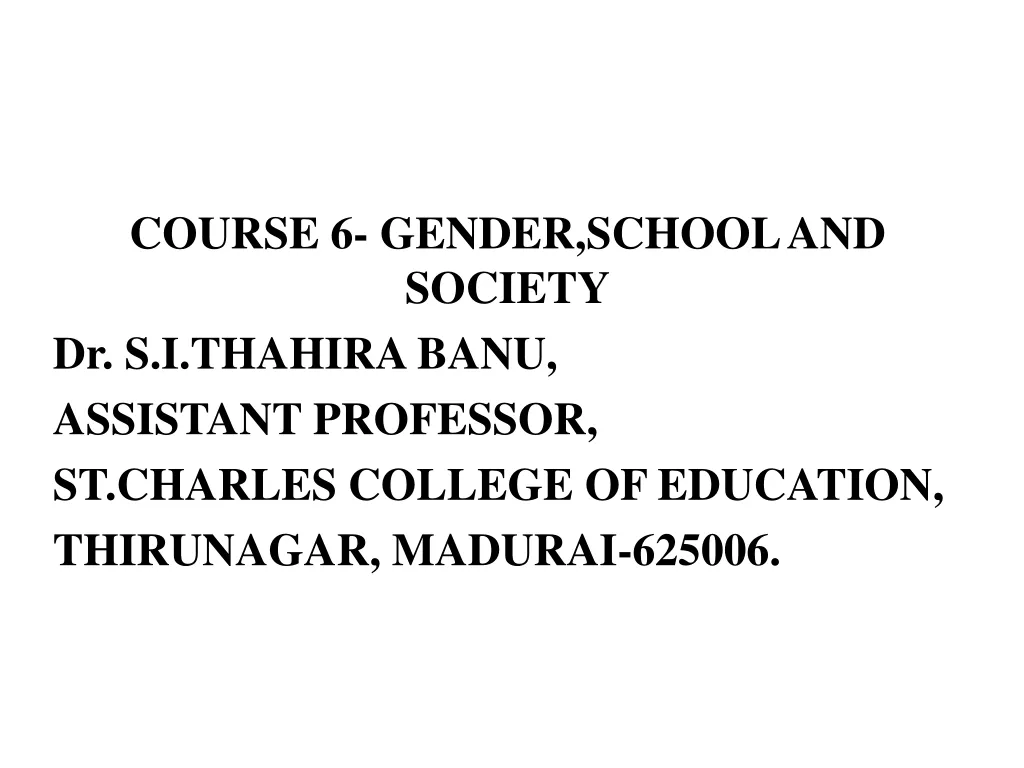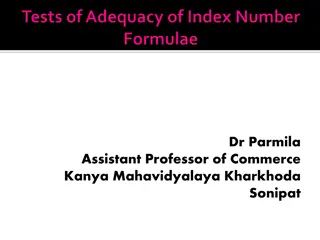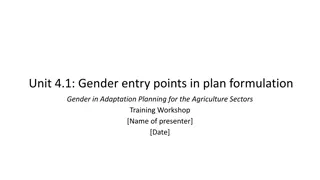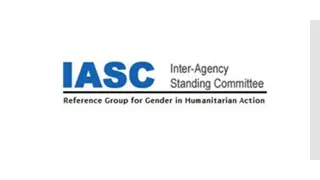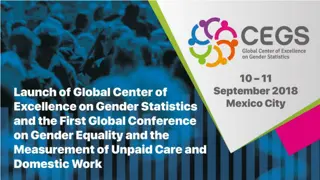Gender DD Index: A Sustainable Development Opportunity
The Gender DD Index presents a practical framework for gender mainstreaming to leverage the Demographic Dividend (DD) as a sustainable development opportunity. Explore how gender equality impacts economic growth and the importance of population structure in achieving sustainable development goals."
Download Presentation

Please find below an Image/Link to download the presentation.
The content on the website is provided AS IS for your information and personal use only. It may not be sold, licensed, or shared on other websites without obtaining consent from the author.If you encounter any issues during the download, it is possible that the publisher has removed the file from their server.
You are allowed to download the files provided on this website for personal or commercial use, subject to the condition that they are used lawfully. All files are the property of their respective owners.
The content on the website is provided AS IS for your information and personal use only. It may not be sold, licensed, or shared on other websites without obtaining consent from the author.
E N D
Presentation Transcript
GENDER DD INDEX : CONCEPT AND METHODOLOGY Sadou Doumbo, NDDO - Mali Malam M. Nafiou, University Abdou Mounouni - Niger Sam Agbahoungba, CREG - Senegal
OUTLINE I. Demographic Dividend (DD) : a sustainable development opportunity II. Gender mainstreaming: An imperative III. A practical framework: The Gender DD Index (GDDI) IV. Case Study 2
The Demographic Dividend (DD) : A sustainable development opportunity 3
The DD: The acceleration of economic growth that can occur in a country as a result of a change in the age structure of the population due to declining fertility and mortality. (Bloom, Kuhn, Prettner 2016). Its importance is shown in international agendas (SDGs, 2063 Agenda, ICPD Action Plan, etc.) It is based on two key pillars: Fertility management and mortality reduction; Size of working age population Source of economic development: example of the East Asian economic miracle (1950 1990). 4
The DD : A Sustainable Development Opportunity Importance of the population structure expressed through the ICPD in Cairo 1994: It sets out population and development objectives and principles that underpinned the sustainable development goals (SDGs) adopted by UN member countries in 2015. Imperative of taking into account all sections of the population at all ages regardless their sex and genders, Adoption and ratification of the Convention on the Elimination of All Forms of Discrimination against Women (CEDAW): guides identification of gender equality priorities. countries in the 5
but also by taking into account the gender. Gender mainstreaming: an imperative 6
Authors Objectives Findings Gender differences in education account for between 0.4% and 0.9% of the differences in growth rates observed between countries in East Asia and those in sub-Saharan Africa and South Asia. Impact of gender inequality in education on economic growth Klasen (1999) Impact of equal economic opportunities and equal economic and political performance on economic growth in developing and developed countries. Out of 101 countries between 1990 and 2000, show that reducing inequality of opportunity leads to an increase in economic growth by 1.3 percentage points and an improvement in equality of participation to 1.2 percentage points.. Mitra and al. (2015) 7
Authors Objectives Findings Impact of gender disparities in entrepreneurship and labour market participation on productivity and per capita income Cuberes and Teigner (2015) The respective exclusion of women from entrepreneurship and the labour market would lead to a 12% and 40% decline in overall per capita income productivity. GDP per capita in the countries of Saharan Africa could increase by 0.9 percentage points with a decrease in gender inequality to the level of inequality observed in Asian emerging countries. Hakura and al. (2016) Impact of income and gender inequality on economic growth Dramani and al. (2015) Contribution of unpaid domestic work Domestic work per day: 7 hours for women and 30 minutes for men in Senegal 8
GDDI Methodology (Gender Demographic Dividend Index) 9
Gender DD Index? A tool for analyzing the country's progress in reducing gender disparities in DD capturing efforts It is derived from DDMI and therefore has DD as an entry point. It reveals both the facts about gender bias and the contribution of women and men to the DD capture process. 5
Gender DD Index? It is based on the five dimensions of DDMI ... ... most of the indicators are gender-specific. 11
The GDDI: List of elementary indicators 12
Components of Dimension 1 Indicators Types Sources Education consumption Gender-specific Survey & National accounts Health consumption Gender-specific Survey & National accounts Other consumptions Gender-specific Survey & National accounts Wage income Gender-specific Survey & National accounts Self-employment income Gender-specific Survey & National accounts Population by age Gender-specific Census or Survey 13 Source: CREG 2019
Components of Dimension 2 Sub dimensions Indicators Types Sources Electoral participation Stakeholder development of laws and regulations Gender-specific Electoral commission Civic engagement and governance participation in the Non-diff. WDI Social network Quality of the social network Gender-specific Survey Atmospheric Survey Center Air Pollution Non-diff. Environment Quality of water Gender-specific Survey Number of rooms per person Access to basic sanitation facilities Cost of housing Gender-specific Survey Gender-specific Survey Gender-specific Survey Housing conditions Subjective being Professional work and private balance well- Satisfaction with life Gender-specific Survey Number of hours of heavy work Gender-specific Survey life Time for leisure and self-care Gender-specific Survey Feeling of security when walking alone at night Gender-specific Survey 14 Security GPI; Administrative Homicide rate Gender-specific
Components of Dimension 3 Sub dimensions Indicators Types Sources Gender- specific Poverty trap Survey Stable state Gender- specific No poverty Survey Gender- specific Exit from poverty Survey Transitional state Gender- specific Shifting into poverty Survey 15 Source: CREG 2019
Components of Dimension 4 Sub dimensions Indicators Types Sources Life expectancy Census Gender-specific Health Total fertility rate DHS Non-differentiable Average length of schooling Gender-specific Survey Education Expected duration of schooling Gender-specific Survey Living standards Consumption per capita Gender-specific Survey 16 Source: CREG 2019
Components of Dimension 5 Sub dimensions Indicators Types Sources Survey/ Census Population density Gender-specific Survey/ Census Average size of households Gender-specific Urbanization Survey/ Census Urbanization rate Ratio of households Entry index Exit index Index of access to infrastructure and basic social services Gender-specific Gender-specific e Gender-specific Gender-specific renter households to owner Survey/ Census Survey/ Census Survey/ Census Migration Survey Gender-specific Infrastructure and basic social services Quality index of infrastructures and basic social services Survey Gender-specific Survey Cost of the basket of housewives in the region Gender-specific Financial flows Survey Rate of access to formal transfer services Gender-specific Survey Consumption per capita Gender-specific 17 Source: CREG 2019
DDMI - NIGER DDMI= 36,1% Legend : < 50% 50% - 79% >=80% 18 Source: CREG 2020
Gender DD Index - NIGER MEN WOMEN GDDI_Women = 34,8% GDDI_Men = 38,0% 19 Source: CREG 2020
Contributions to DD Men s share: 52% Woemn s share: 48% Men s contribution: 0,188 Women s contribution: 0,172 20 Source: CREG 2020
THANK YOU THANK YOU
